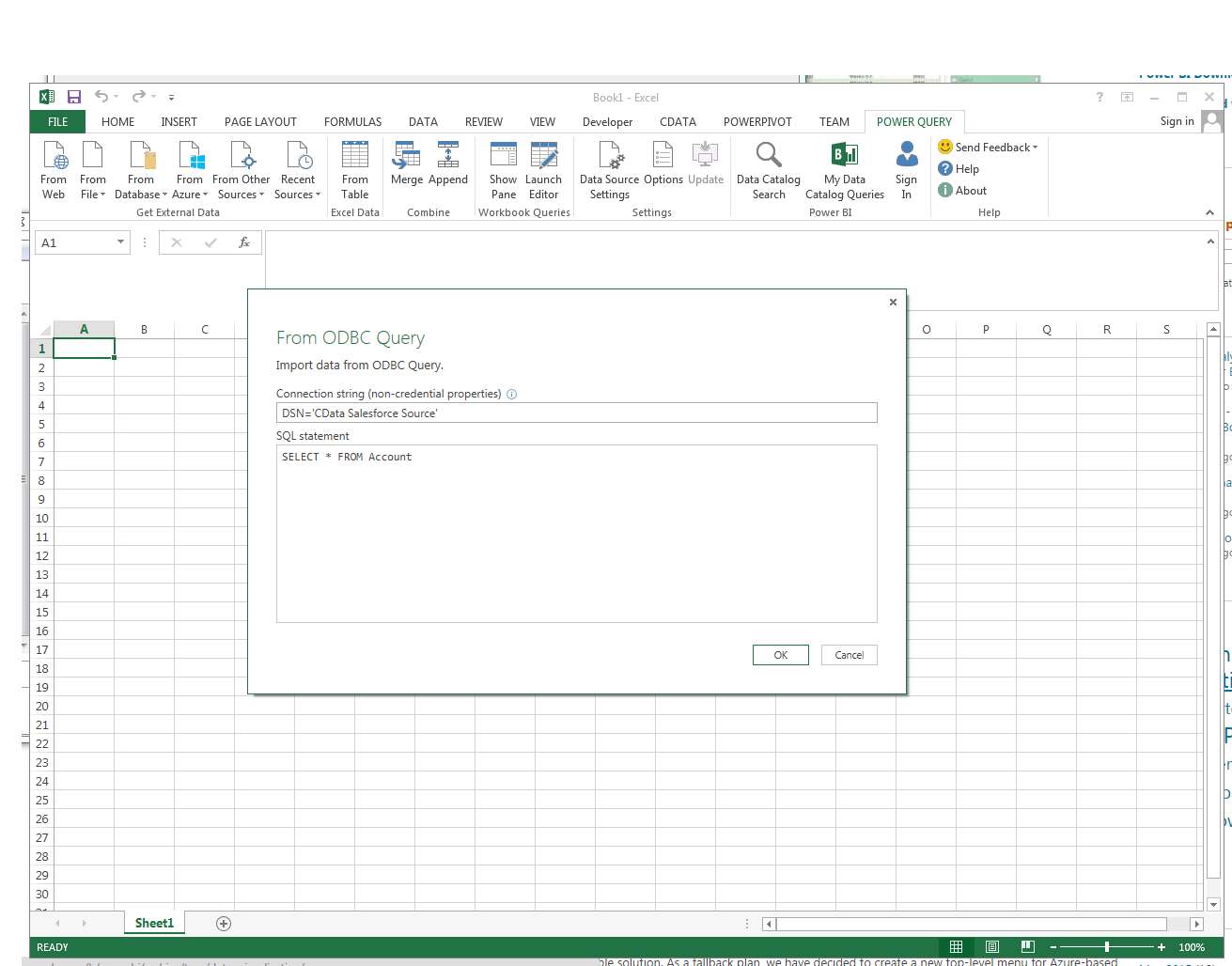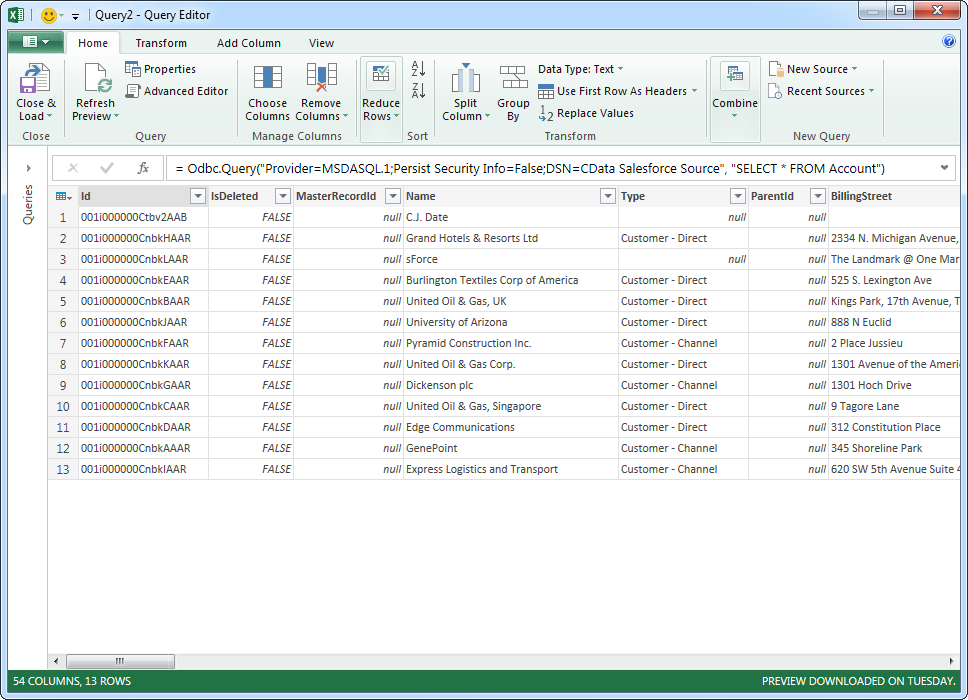Discover how a bimodal integration strategy can address the major data management challenges facing your organization today.
Get the Report →Use the CData ODBC Driver for MongoDB in Microsoft Power Query
You can use the CData MongoDB ODBC Driver with Microsoft Power Query. In this article, you will use the ODBC driver to import MongoDB data into Microsoft Power Query.
The CData ODBC Driver for MongoDB enables you to link to MongoDB data in Microsoft Power Query, ensuring that you see any updates. This article details how to use the ODBC driver to import MongoDB data into Microsoft Power Query.
Connect to MongoDB as an ODBC Data Source
If you have not already, first specify connection properties in an ODBC DSN (data source name). This is the last step of the driver installation. You can use the Microsoft ODBC Data Source Administrator to create and configure ODBC DSNs.
Set the Server, Database, User, and Password connection properties to connect to MongoDB. To access MongoDB collections as tables you can use automatic schema discovery or write your own schema definitions. Schemas are defined in .rsd files, which have a simple format. You can also execute free-form queries that are not tied to the schema.
Import MongoDB Data
Follow the steps below to import MongoDB data using standard SQL:
-
From the ribbon in Excel, click Power Query -> From Other Data Sources -> From ODBC.
- Enter the ODBC connection string. Below is a connection string using the default DSN created when you install the driver:
Provider=MSDASQL.1;Persist Security Info=False;DSN=CData MongoDB Source -
Enter the SELECT statement to import data with. For example:
SELECT borough, cuisine FROM restaurants![The ODBC connection string and SELECT query. (Salesforce is shown.)]()
Enter credentials, if required, and click Connect. The results of the query are displayed in the Query Editor Preview. You can combine queries from other data sources or refine the data with Power Query formulas. To load the query to the worksheet, click the Close and Load button.
![Tables loaded in Power Query. (Salesforce is shown.)]()








